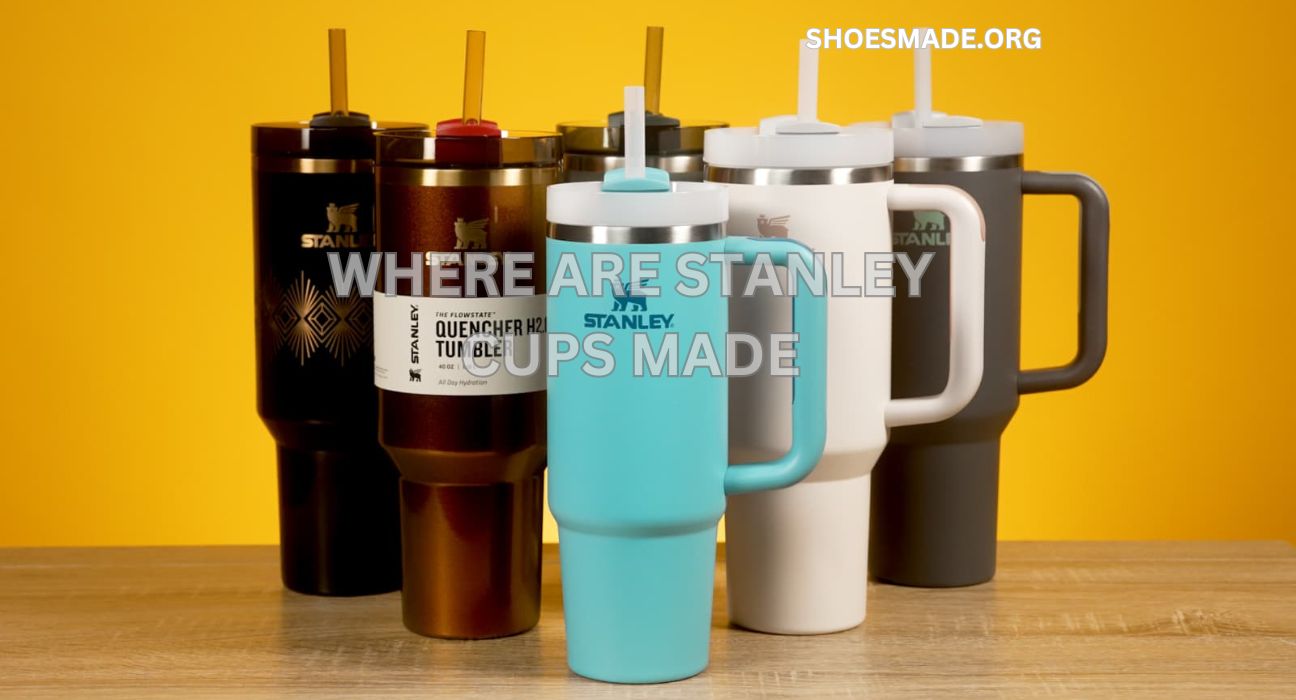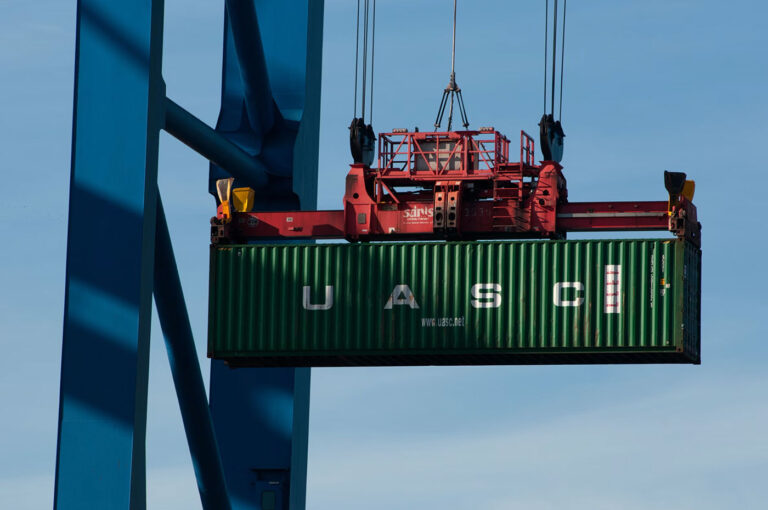Where Are Stanley Cups Made? A Comprehensive Guide

Introduction to Stanley Cups
Stanley Cups have become a household name for their durable, stylish, and functional design. Stanley Cups are known for their high-quality construction and ability to maintain beverage temperature. These cups have a long history, dating back to their creation in 1913, when William Stanley Jr. invented the first all-steel vacuum bottle. Over the years, Stanley Cups have evolved to become a favorite choice for many outdoor enthusiasts, office-goers, and health-conscious individuals. In this article, we’ll explore where Stanley Cups are made and delve into their manufacturing process, locations, and reasons behind their popularity.
Read More: Where Are Crocs Made: A Comprehensive Guide
Where Are Stanley Cups Made?
Stanley Cups are manufactured in multiple locations around the world. The main production sites include China and Brazil. Stanley ensures that all their products adhere to strict quality standards regardless of the manufacturing location. This global distribution helps them meet the high demand for their products while maintaining affordability and reliability.
Manufacturing Facilities in China
One of the primary production hubs for Stanley Cups is in China. The manufacturing plants here are known for their advanced technology and large-scale production capacity. Stanley Cups produced in China are subject to rigorous quality checks and follow the same standards as other locations to ensure consistency and performance. The Chinese factories specialize in making the insulated stainless-steel tumblers, bottles, and mugs that Stanley is famous for.
Production Sites in Brazil
Stanley also has manufacturing facilities in Brazil. The company owns two facilities here that focus on maintaining the highest ethical and quality standards. This move helps reduce reliance on a single location, ensuring that production can continue even in times of disruption. Stanley’s commitment to maintaining its legacy of durability and performance is evident in its choice to spread its manufacturing facilities to different parts of the world.
Quality Control and Standards at Different Locations
Whether made in China or Brazil, all Stanley Cups go through strict quality control processes. The company prioritizes maintaining consistent quality, durability, and performance across all its products. Each cup undergoes a series of inspections to ensure it meets Stanley’s high standards. This attention to detail is what makes Stanley Cups a trusted brand globally.

How Are Stanley Cups Manufactured?
The manufacturing process of Stanley Cups combines traditional craftsmanship and modern technology. The process is meticulous, ensuring every cup meets the brand’s high standards.
Material Selection and Preparation
Stanley Cups are made primarily from stainless steel, chosen for its durability and excellent temperature-retention properties. The steel is cut into sheets, which are then shaped into the cup’s form using high-precision machines.
Assembly and Vacuum Insulation Process
The cups are assembled with multiple layers to create a vacuum-sealed bottle. This vacuum insulation helps maintain the temperature of beverages for an extended period, keeping drinks hot or cold for hours.
Polishing, Coating, and Engraving
Once the assembly is complete, the cups are polished to give them a smooth and shiny finish. Some Stanley Cups are also powder-coated to enhance their durability and offer a variety of color options. Logos and other markings are then engraved on the cups using laser technology.
Final Quality Inspection and Packaging
Each cup goes through a final round of inspections to ensure there are no defects. After passing these tests, the cups are packaged using sustainable materials, reflecting Stanley’s commitment to environmental responsibility.
Key Factors Influencing Manufacturing Location
The choice of manufacturing locations is influenced by several key factors:
Cost-Effectiveness and Production Capabilities
Manufacturing in China and Brazil provides cost advantages without compromising on quality. Both locations have the necessary infrastructure to produce high-quality products at competitive prices.
Ethical Standards and Sustainability
Stanley is committed to maintaining ethical standards across all its production facilities. This includes fair labor practices, environmentally friendly processes, and sustainability initiatives.
Technology Integration and Innovation
Stanley’s production facilities are equipped with the latest technology to produce cups that meet modern standards. This includes advanced machinery for vacuum insulation and precise laser engraving.
Why Are Stanley Cups Popular?
Stanley Cups have surged in popularity in recent years. Their practical design, combined with strategic marketing and high-quality features, has made them a sought-after item.
Role of Social Media and Influencer Marketing
The popularity of Stanley Cups can be largely attributed to social media exposure. Platforms like TikTok have played a significant role in boosting the visibility of Stanley Cups. Influencers and celebrities showcasing these products have made them trendy and desirable.
Unique Features and Design Innovations
Stanley Cups stand out due to their large capacity, excellent temperature retention, and durable design. They are versatile and can be used for various beverages, making them a preferred choice for many.
Strategic Collaborations and Limited-Edition Releases
Stanley often collaborates with other brands to release limited-edition tumblers, adding to their exclusivity and appeal. These collaborations create a sense of urgency and drive demand, making Stanley Cups a modern-day collectible item.
Read More: Why is DHgate So Cheap: A Comprehensive Guide
Where Are Stanley Cups Made in the USA?
Stanley Cups were initially produced in the United States, but due to the need for expanded production and cost management, most manufacturing has moved abroad. While some components might still be produced in the USA, the primary manufacturing now takes place in facilities located in China and Brazil. Stanley ensures that regardless of the production site, the quality and durability remain consistent.
Where Are Stanley Cups Made From?
Stanley Cups are primarily made from stainless steel, chosen for its durability and temperature-retention properties. The steel is sourced from various regions and processed at different manufacturing locations globally, including China and Brazil. The cups undergo a meticulous production process to ensure they meet the brand’s high-quality standards and long-lasting performance, making them reliable for both hot and cold beverages.
Why Did Stanley Move Manufacturing Overseas?
Stanley moved its manufacturing overseas to reduce costs and increase production capabilities. While the cups were originally produced in the United States, the shift to international production helped the company meet growing demand. This strategy allowed Stanley to maintain high-quality standards while offering products at competitive prices.
How Stanley Ensures Quality Across Manufacturing Sites
Stanley has implemented strict quality control measures at its factories in China and Brazil. Every product goes through multiple rounds of testing, from material selection to final inspection. This ensures that regardless of the manufacturing location, all Stanley Cups meet the brand’s renowned standards for durability and performance.
Are There Any Differences in Cups Made in Different Locations?
No, there are no significant differences in Stanley Cups made at various locations. Stanley ensures uniformity in quality and design through stringent quality control processes. Whether produced in China or Brazil, the cups are crafted using the same materials and manufacturing techniques, making them reliable and consistent.
Is Stanley Still Producing Cups in the USA?
Currently, Stanley no longer manufactures its popular insulated cups in the USA. The production has shifted to international facilities to optimize cost and efficiency. However, some components may still be produced in the United States before being shipped to overseas plants for final assembly.
What Does the Future Hold for Stanley Cup Manufacturing?
Stanley aims to continue expanding its global manufacturing capabilities while upholding high-quality standards. The company may explore additional production sites in the future to further diversify its manufacturing base. This strategy will help Stanley meet increased consumer demand while maintaining its commitment to excellence and sustainability.

Conclusion
Stanley Cups are made in different parts of the world, including China and Brazil. This global manufacturing strategy allows Stanley to maintain its high-quality standards while meeting the growing demand for its products. Whether made in China or Brazil, Stanley Cups are crafted with precision and care, ensuring they live up to the brand’s reputation for durability and performance. As the popularity of Stanley Cups continues to rise, so does their commitment to delivering reliable, long-lasting products to consumers worldwide.
Read More: Peter Millar Shoes: The Perfect Blend of Style and Comfort
Frequently Asked Questions
1. Where are Stanley Cups made?
Stanley Cups are made in factories located in China and Brazil. These facilities produce high-quality products under strict standards to meet global demand.
2. Why did Stanley move production overseas?
Stanley moved production overseas to reduce costs and expand manufacturing capabilities. This decision helps maintain product affordability and quality.
3. Are Stanley Cups still made in the USA?
No, Stanley Cups are no longer made in the USA. The primary manufacturing locations are now in China and Brazil.
4. Is there a difference in quality based on manufacturing location?
No, there is no difference in quality. Stanley ensures uniform standards across all manufacturing locations through stringent quality control processes.
5. What materials are used to make Stanley Cups?
Stanley Cups are primarily made from stainless steel, known for its durability and temperature retention properties.
6. Are Stanley Cups ethically produced?
Yes, Stanley ensures that all its facilities adhere to ethical labor practices and sustainable manufacturing processes.
7. When did Stanley move production out of the USA?
Stanley shifted its primary production overseas several years ago to better meet global demand and reduce costs.
8. Which countries are involved in manufacturing Stanley Cups?
Stanley Cups are currently manufactured in China and Brazil, with both locations maintaining strict quality and safety standards.
9. Do Stanley Cups made in China and Brazil have the same quality?
Yes, Stanley Cups made in both China and Brazil have the same high quality, as the company enforces consistent standards across all its production sites.
10. Will Stanley Cups be manufactured in other countries in the future?
Stanley might expand its production to other countries, but they will ensure the same level of quality and reliability in every location.






